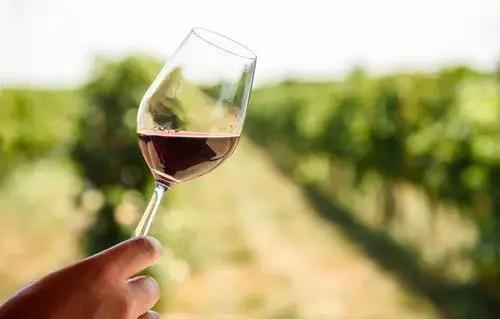Given the fact that China 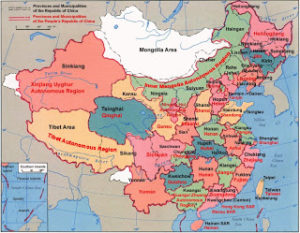 is now the 10th largest wine producer in the world I thought it would be useful to have a look at the main wine producing regions in the country.
is now the 10th largest wine producer in the world I thought it would be useful to have a look at the main wine producing regions in the country.
Grape growing areas in China mainly concentrate in Shandong, Hebei, Ningxia and Xinjiang provinces and winechina.com has a useful section on the regions.
Shandong is a region lying on the East Coast that has attracted the interest of Bordeaux chateaux owners – Château Lafite Rothschild has partnered with CITIC, China’s largest state-owned investment company, on over 60 acres of vines on the peninsula of Penglai in Shandong province.
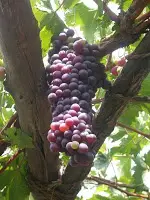 The Penglai peninsula is on its easternmost tip of the province and wine companies there already produce Cabernet Sauvignon, Merlot and Cabernet Franc. Some say the region is China’s Bordeaux. The latitude of Penglai is the same as Bordeaux and the Napa Valley – 37º.
The Penglai peninsula is on its easternmost tip of the province and wine companies there already produce Cabernet Sauvignon, Merlot and Cabernet Franc. Some say the region is China’s Bordeaux. The latitude of Penglai is the same as Bordeaux and the Napa Valley – 37º.
The name Shandong literally means “mountain’s east”, which refers to the province’s location east of the Taihang Mountains. Shandong is mostly flat in terrain with the north western, western, and south western parts of the province being part of the vast North China Plain.
The east of the province is the hilly Shandong Peninsula extending into the sea; it separates Bohai Sea in the north west from the Yellow Sea to the east and south. Presently, there are more than 140 wineries in the region.
Hebei is home to two of China’s leading wines – Dragon Seal and Great Wall. The name Hebei means “north of the (Yellow) River”. Most of central and southern Hebei lies within the North China Plain and its provincial capital is Shijiazhuang.
China’s leading wines – Dragon Seal and Great Wall. The name Hebei means “north of the (Yellow) River”. Most of central and southern Hebei lies within the North China Plain and its provincial capital is Shijiazhuang.
Hebei borders the Bohai Sea on the east. The western part of Hebei rises into the Taihang Mountains while the Yan Mountains run through northern Hebei, beyond which lie the grasslands of Inner Mongolia. The Great Wall of China cuts through northern Hebei from east to west.
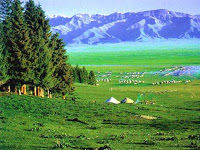
Xinjiang borders Russia, Mongolia, Kazakhstan, Kyrgyzstan, Tajikistan, Afghanistan, Pakistan and India. “Xinjiang” literally means “New Frontier” and is the country that the Silk Road trekked through.
The area is renowned for its grapes and raisins – grape growing and wine making in Xinjiang are mentioned in Sima Qian’s Historical Records:
The Account of Dawan (the old name for an area within present-day Xinjiang) and Eurasian grapes were introduced to China from Xinjiang and Central Asia at the time of t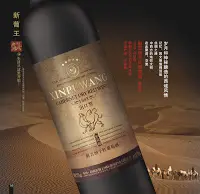 he envoy Zhang Qian’s journey through the Western Region at the beginning of the Han Dynasty (206 BC -AD 220).
he envoy Zhang Qian’s journey through the Western Region at the beginning of the Han Dynasty (206 BC -AD 220).
Summers here tend to be hot and dry, so the grapes have higher sugar content and fewer problems with disease than in coastal regions, though they sometimes lack acidity.
Winters are extremely cold and the vines need extra protection to survive by being banked up. Suntime Winery, founded in 1998, is t he leading producer here.
he leading producer here.
Ningxia is located on the north west Loess highland, the Yellow River flows through a vast area of its land. The Great Wall of China runs along its north eastern boundary. It is bounded by Shaanxi and Gansu provinces and Inner Mongolia autonomous region.
Ningxia is mostly desert and is sparsely settled, but the vast plain of the Yellow River in the north has been irrigated for centuries; over the years an extensive system of canals has been built. Wine production flourishes in the eastern part of the Helan Mountains Region.
Jancis Robinson has reported that Ningxia seems to be the most popular province for the latest 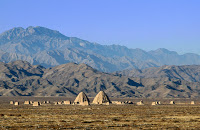 round of investment in Chinese vineyards:
round of investment in Chinese vineyards:
“The climate here is much drier than that of Shandong province on the east coast where so many of the first vineyards of the modern era were located.
Yet winter temperatures rarely fall as fatally low as in Muslim Xinjiang in the far west where vines have to be banked up for survival every autumn, and which is so far from China’s main centres of wine-drinking population.
Pernod Ricard have also invested in Helan Mountain. After an early involvement in the Dragon’s Seal brand, the French multinational has now set up in a joint venture with locals in Ningxia province and an Australo-Chinese team is already making a range of sol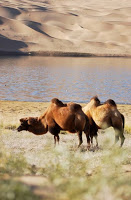 id varietals using Helan Mountain as a brand name.”
id varietals using Helan Mountain as a brand name.”
Doubtless we will learn more about the developing Chinese vineyards – the most recent news is that Bayan Nur City in northern China’s Inner Mongolia Autonomous Region is planning to create a vineyard in its Ulan Buh Desert.
According to the municipal desert control authority, the project will cover a total area of 26,667 hectares (65 895 acres), yield 600,000 tonnes of wine grapes a year and produce 400,000 tonnes of wine annually. Now that is Big!

